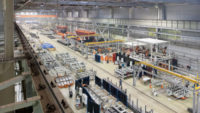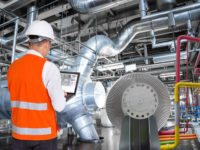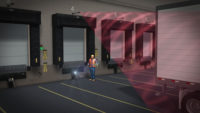Plant safety is a paramount concern for industries globally. Personal Protective Equipment (PPE) offers a frontline defense against hazards, protecting workers from injuries and health risks. The right PPE ensures not only the welfare of employees but also the smooth functioning of industrial operations.
This article will delve into the intersection of PPE and next-gen technologies such as wearable tech with sensors, smart fabric, and augmented reality safety goggles, laying the groundwork for superior plant safety. Let’s dive in.
The evolution and need for advanced PPE in industrial environments
Personal Protective Equipment originated in ancient civilizations where rudimentary shields and armor were used as protective gear. As industries evolved over centuries, the demand for more sophisticated protection for workers grew. The last few decades have witnessed a substantial transformation in PPE, adapting to the safety standards and expectations of various industrial environments.
Modern industries demand PPE that caters to both protection and efficiency. Workers and safety professionals now expect gear that aligns with the principles of Industry 4.0 and the workflows of digital factories, meeting the tri-fold needs of safety, efficiency, and convenience.
Workers in high-hazard environments confront a range of challenges on a daily basis. From exposure to harmful chemicals to working at perilous heights, these challenges demand equipment that offers the utmost protection. Traditional PPE often falls short, leading to the need for more advanced solutions that cater to modern industrial challenges.
Traditional PPE, while effective in its time, often lacks the features and versatility required by today's industries. Many workers find themselves at odds with gear that doesn’t cater to the specific hazards of their jobs. The disconnect between old PPE standards and contemporary industrial demands has fueled the push for next-gen safety equipment.
Next-gen PPE technologies
Wearable tech with sensors
Wearable technology seamlessly integrates sensors into traditional PPE. These sensors collect data, monitor conditions, and relay vital information to both the wearer and supervisory systems. Such tech brings intelligence to PPE, offering insights that were once impossible to glean.
Real-time monitoring through wearable tech offers an unmatched advantage. It allows for the early detection of potential hazards, giving workers and supervisors a head start in preventive measures. With timely interventions, many industrial accidents can be prevented, safeguarding human lives.
Smart fabrics designed for extreme conditions
Pushing the boundaries of textile engineering, smart fabrics are born from a fusion of cutting-edge materials and innovative design principles. Some use nanoparticles, while others harness the power of high-tech polymers. These fabrics are a testament to human ingenuity, crafted to resist extreme conditions.
Smart fabrics stand out for their durability and adaptability. Unlike conventional materials, they can morph in response to environmental stimuli, offering protection tailored to specific hazards. The result is gear that lasts longer and offers superior safety measures.
Augmented reality safety goggles
Augmented Reality (AR) has carved a niche for itself in the realm of PPE, especially in the form of safety goggles. These goggles overlay digital information onto the physical world, giving workers additional data and insights. It’s a melding of the virtual and real, enhancing the user’s perception and understanding of their environment.
AR safety goggles come with enhanced visibility, especially in low-light conditions. Additionally, they receive real-time risk alerts and information overlays, equipping workers with knowledge that can be crucial for their safety.
Drones for safety surveillance
Drones have taken center stage in modern safety surveillance. They soar above industrial plants, using cameras and sensors to monitor and assess areas deemed too hazardous for human inspection. Their aerial advantage provides a vantage point that was previously unattainable.
The advantages of employing drones in safety surveillance are manifold. First, they minimize human exposure to potential dangers. They also offer an unparalleled aerial perspective, granting a bird's-eye view of operations. Furthermore, their agility ensures a swift response to any safety breaches, allowing for prompt action.
The added benefits of next-gen PPE
Enhanced user comfort
Modern PPE emphasizes user comfort. Engineers and designers have incorporated ergonomics and user feedback into the development process. This results in equipment that not only shields the user from hazards but also ensures they remain comfortable during long shifts.
Comfort plays a critical role in PPE, especially during extended working hours. Workers wearing uncomfortable gear are more likely to be distracted or make errors. Comfortable PPE, on the other hand, allows workers to focus solely on their tasks, reducing the likelihood of accidents.
Increased efficiency
Technologically advanced PPE isn’t just about protection; it’s about enhancing workflow. With features like real-time data monitoring and communication capabilities, modern PPE helps streamline operations. It bridges the gap between workers and supervisors, fostering a cohesive, efficient work environment.
Take the case of a chemical plant worker equipped with a wearable tech suit that detects toxic gas leaks. When a minute leak is detected, the suit alerts the worker and the control room simultaneously. This immediate feedback loop allows for quick containment, minimizing downtime and potential health risks.
Customization and personalization
The one-size-fits-all approach is no longer viable in the world of PPE. Modern industries have varied requirements, and PPE must adapt accordingly. Customized equipment, tailored to specific needs, is fast becoming the norm, offering targeted protection.
Data plays a crucial role in the personalization of PPE. By analyzing the unique challenges and requirements of an industry, manufacturers can craft equipment that addresses specific needs. Feedback loops and continuous data collection further refine the customization process, resulting in truly personalized protection.
Implementation and challenges
Adopting next-gen PPE technologies requires a thoughtful strategy. Initial steps include assessing current safety needs, followed by pilot testing of the new equipment. Collaborative efforts between PPE manufacturers, workers, and safety professionals ensure a smooth transition to the use of advanced PPE technologies, leading to optimal safety outcomes.
Adopting advanced PPE invariably raises certain concerns. The upfront costs might seem daunting to some organizations, and training workers to use the new equipment can be time-consuming. Addressing these concerns head-on, through transparent communication and demonstrations of long-term benefits, can mitigate resistance and drive acceptance.
Businesses keen on adopting advanced PPE should begin with a thorough needs assessment. Engaging with industry experts and PPE manufacturers can provide valuable insights. Furthermore, pilot programs and feedback loops help refine the adoption process, ensuring that the transition is both smooth and beneficial.
Conclusion
The future of PPE in industrial settings is bright, with technology leading the charge. We stand at the cusp of a safety revolution, where protection, efficiency, and user comfort converge. It’s an exciting era, where innovation promises to reshape the landscape of industrial safety.
Safety and health managers play a crucial role in this evolving landscape. Staying informed about the latest advancements and being open to change can make a world of difference. The adoption of next-gen PPE technologies is an invitation to be at the forefront of a movement that promises not only enhanced safety but also a brighter future for industrial plants worldwide.




